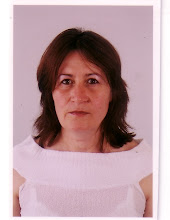петък, 17 април 2009 г.
kozunak
http://www.grouprecipes.com/45741/kozunak-bulgarian-easter-bread.html
http://www.recipezaar.com/Bulgarian-Easter-Bread-Kozunak-109967
http://www.recipezaar.com/Bulgarian-Easter-Bread-Kozunak-109967
Bulgarien Easter
Easter traditions in Bulgaria are a derivative of the Eastern Orthodox Church rituals. As the Bulgarian name implies "Velikden" (Great Day), Easter in one of the most significant holidays in the Bulgarian calendar and starting with Palm Sunday, the holy week leads up to the Great Day. In tune with worldwide Orthodox traditions, bright red colored eggs and Easter breads known as "kozunak" are the prominent symbols of Easter in Bulgaria.
At midnight on the Saturday before Easter Sunday, people gather at the church with red painted eggs and bread.
The first egg to be made is always painted red to symbolize the blood of Christ and put aside - either to be buried in the fields to ensure fertility or kept in the home to bring good luck. The priest proclaims three times "Christos voskrese" (Christ has risen) and the congregation replies "Vo istina voskrese" (Indeed he has risen). This is the greeting during 40 days after Pascha. Also, the greeting is exchanged during the ritual tapping of the eggs which is explained below.
The Bulgarian good luck crack is a unique Easter tradition in Bulgaria. Eggs are cracked after the midnight service and over the next few days. The egg that is cracked on the wall of the church is the first egg people eat after the long fast of Lent. People take turns in tapping their eggs against the eggs of others, and the person who ends up with the last unbroken egg is believed to have a year of good luck.
The Christian tradition of the red egg custom is connected to a specific legend. Mary Magdalene, whom Jesus had cured from all the evil spirits within her, was the first one to see Jesus risen from the dead and she went around the world to spread the happy news. She reached Rome and Emperor Tiberius’s palace. According to the tradition, everyone visiting him was supposed to carry a gift to the Emperor.
The rich people were carrying expensive gifts while the poor ones offered whatever they could afford. Mary Magdalene took an egg to Tiberius’s palace and handed it to the Emperor with the following greeting: ”Christ has risen from the dead!” The Emperor could not believe what he heard and responded: “How could anyone ever rise from the dead?! It is as impossible as that white egg to turn red right now!”
While Tiberius was talking, the egg in Mary Magdalene’s hands started changing its color until it finally became bright red. The Easter greeting ever since has remained “Christ has risen from the dead” and Christians all over the world color eggs in red (and various other colors) for Easter to celebrate their belief in the resurrection.
From:
http://www.abvg.net/Traditions/Easter/easter.html
http://festivals.iloveindia.com/easter/traditions/easter-in-bulgaria.html
At midnight on the Saturday before Easter Sunday, people gather at the church with red painted eggs and bread.
The first egg to be made is always painted red to symbolize the blood of Christ and put aside - either to be buried in the fields to ensure fertility or kept in the home to bring good luck. The priest proclaims three times "Christos voskrese" (Christ has risen) and the congregation replies "Vo istina voskrese" (Indeed he has risen). This is the greeting during 40 days after Pascha. Also, the greeting is exchanged during the ritual tapping of the eggs which is explained below.
The Bulgarian good luck crack is a unique Easter tradition in Bulgaria. Eggs are cracked after the midnight service and over the next few days. The egg that is cracked on the wall of the church is the first egg people eat after the long fast of Lent. People take turns in tapping their eggs against the eggs of others, and the person who ends up with the last unbroken egg is believed to have a year of good luck.
The Christian tradition of the red egg custom is connected to a specific legend. Mary Magdalene, whom Jesus had cured from all the evil spirits within her, was the first one to see Jesus risen from the dead and she went around the world to spread the happy news. She reached Rome and Emperor Tiberius’s palace. According to the tradition, everyone visiting him was supposed to carry a gift to the Emperor.
The rich people were carrying expensive gifts while the poor ones offered whatever they could afford. Mary Magdalene took an egg to Tiberius’s palace and handed it to the Emperor with the following greeting: ”Christ has risen from the dead!” The Emperor could not believe what he heard and responded: “How could anyone ever rise from the dead?! It is as impossible as that white egg to turn red right now!”
While Tiberius was talking, the egg in Mary Magdalene’s hands started changing its color until it finally became bright red. The Easter greeting ever since has remained “Christ has risen from the dead” and Christians all over the world color eggs in red (and various other colors) for Easter to celebrate their belief in the resurrection.
From:
http://www.abvg.net/Traditions/Easter/easter.html
http://festivals.iloveindia.com/easter/traditions/easter-in-bulgaria.html
Абонамент за:
Публикации (Atom)

